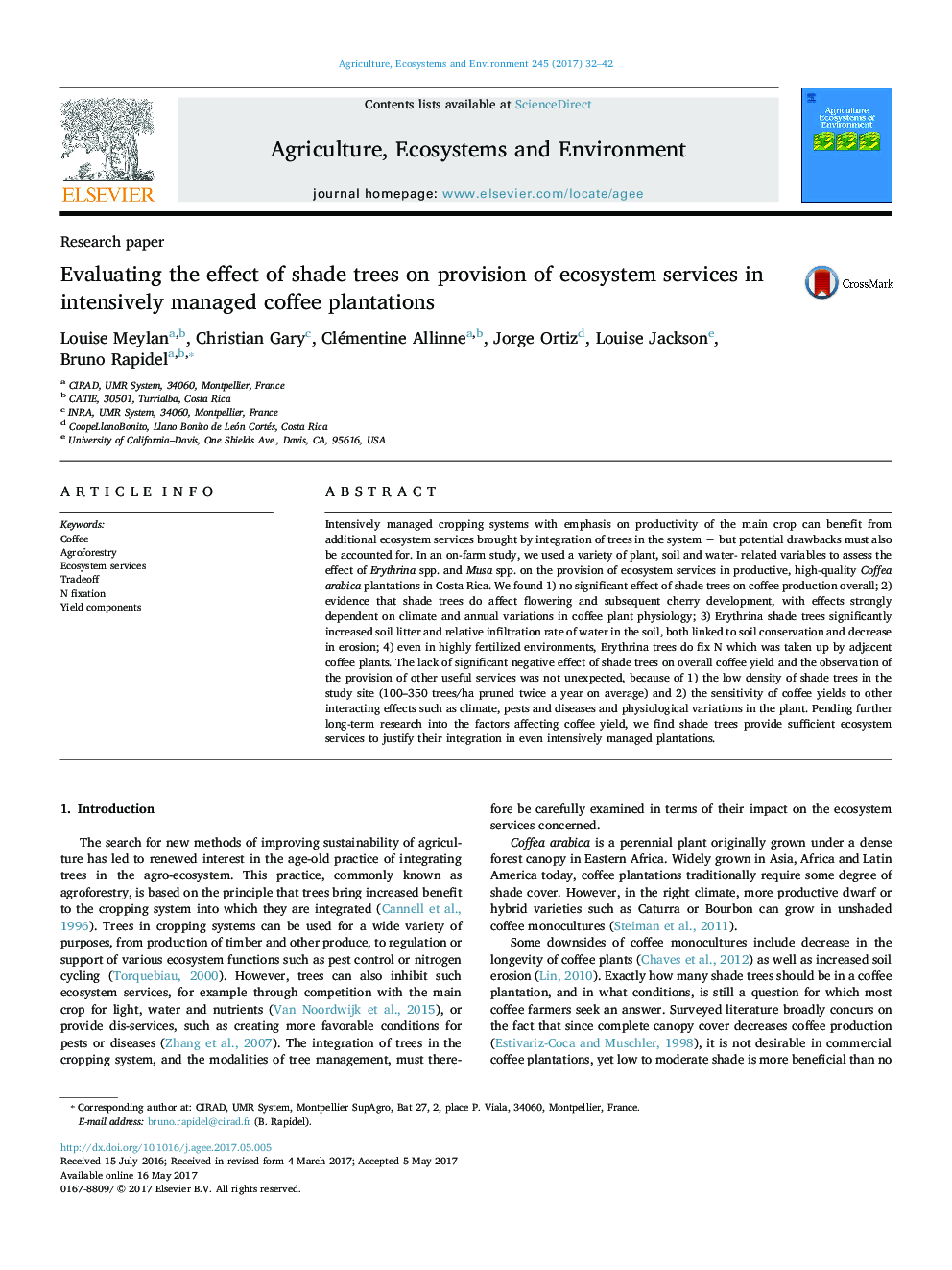| Article ID | Journal | Published Year | Pages | File Type |
|---|---|---|---|---|
| 5538101 | Agriculture, Ecosystems & Environment | 2017 | 11 Pages |
â¢Coffee yield was not significantly affected by shade trees, Erythrina and Musa.â¢Coffee under Erythrina trees had higher infiltration rate and more litter.â¢Erythrina trees appear to fix nitrogen even in a highly fertilized environment.â¢Integration of some trees into coffee plantations could be useful, even in intensive systems.
Intensively managed cropping systems with emphasis on productivity of the main crop can benefit from additional ecosystem services brought by integration of trees in the system â but potential drawbacks must also be accounted for. In an on-farm study, we used a variety of plant, soil and water- related variables to assess the effect of Erythrina spp. and Musa spp. on the provision of ecosystem services in productive, high-quality Coffea arabica plantations in Costa Rica. We found 1) no significant effect of shade trees on coffee production overall; 2) evidence that shade trees do affect flowering and subsequent cherry development, with effects strongly dependent on climate and annual variations in coffee plant physiology; 3) Erythrina shade trees significantly increased soil litter and relative infiltration rate of water in the soil, both linked to soil conservation and decrease in erosion; 4) even in highly fertilized environments, Erythrina trees do fix N which was taken up by adjacent coffee plants. The lack of significant negative effect of shade trees on overall coffee yield and the observation of the provision of other useful services was not unexpected, because of 1) the low density of shade trees in the study site (100-350 trees/ha pruned twice a year on average) and 2) the sensitivity of coffee yields to other interacting effects such as climate, pests and diseases and physiological variations in the plant. Pending further long-term research into the factors affecting coffee yield, we find shade trees provide sufficient ecosystem services to justify their integration in even intensively managed plantations.
